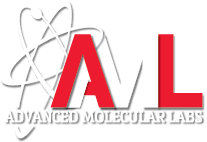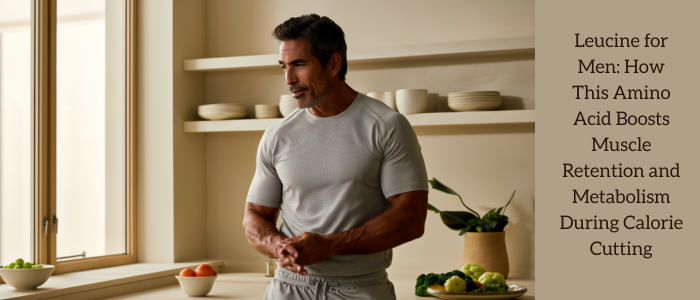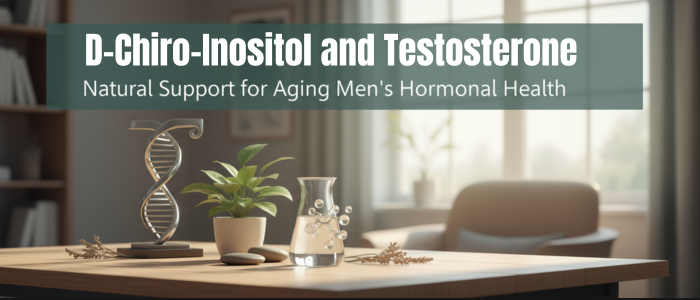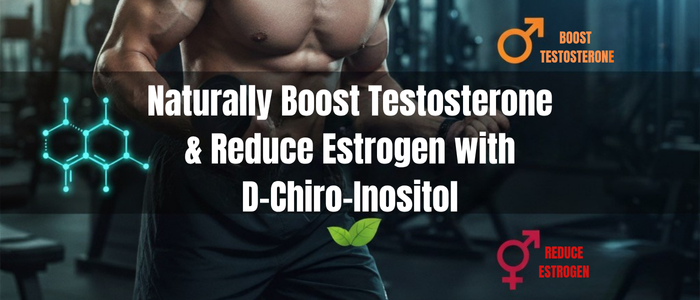

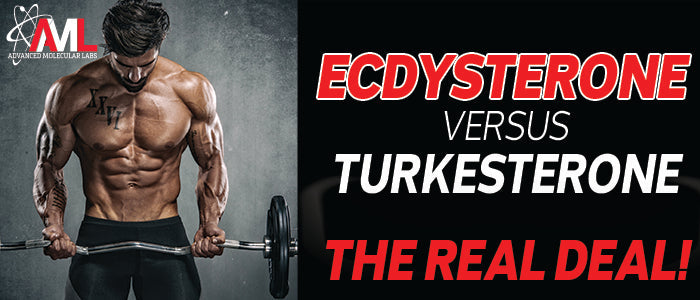
Ecdysterone vs Turkesterone: Key Differences Explained
By Robert Schinetsky
The supplement industry often capitalizes on understudied ingredients, presenting them as revolutionary solutions to consumers. This trend is evident with compounds like D-Aspartic acid and Tribulus Terrestris, and now with turkesterone, which is being compared to anabolic steroids. But how does turkesterone truly measure up?
Let's delve into the details of turkesterone vs ecdysterone and uncover their distinctions.
What is Turkesterone?
Turkesterone is a bioactive compound found in Ajuga turkestanica, a plant traditionally used for its anabolic and adaptogenic properties. This plant is especially revered in Uzbekistan and Tadzhikistan for its benefits on muscle strength and various health conditions.
Turkesterone belongs to the ecdysteroids family, which are anabolic compounds that play roles in growth and reproduction in plants and insects. Turkesterone is an analog of 20-hydroxyecdysone, commonly known as ecdysterone, a compound also present in Advanced Molecular Labs' Ecdysterone supplement.
In terms of turkesterone studies, research highlights several potential benefits of Ajuga turkestanica extracts:
- Antiproliferative, antimicrobial, and antioxidant effects
- Wound healing support
- Reduction of hyperglycemia in diabetic models
- Increased lactation in animal studies
- Immunostimulating effects
These effects are largely attributed to the presence of ecdysteroids. However, turkesterone's popularity as a muscle-building supplement is partly due to its name's resemblance to testosterone and its anabolic properties observed in certain studies.
Notably, ecdysteroid-enriched extracts, including pure turkesterone, have shown anabolic effects on muscles, anti-stress benefits, and the ability to activate Notch receptors in muscle cells, promoting new muscle cell development. Additionally, in vitro studies suggest that these ecdysteroids can reduce myostatin expression, a protein that limits muscle growth.
Despite these promising findings, there are significant challenges. Firstly, human studies on turkesterone are lacking, with most research conducted in cell cultures and animals. Secondly, the dosage in supplements is often insufficient, requiring large amounts of extract to reach effective levels observed in studies.
The good news is that there already is another option that's readily accessible, not over-priced, and (best of all) is supported by human research -- turkesterone's big brother...ECDYSTERONE!
Ecdysterone for More Muscle & Strength
Ecdysterone, or 20-hydroxyecdysone, is another naturally occurring ecdysteroid found in plants. Unlike turkesterone, ecdysterone has been studied in humans, showing significant benefits for resistance-trained individuals, including increased hypertrophy and strength.
How Does Ecdysterone Work?
Ecdysterone promotes muscle growth through estrogen receptor-beta activation, which plays a role in muscle growth and regeneration. It also supports muscle protein synthesis by stimulating the PI3K/Akt signaling pathway. Importantly, ecdysterone does not interact with androgen receptors, avoiding the side effects associated with anabolic steroid use.
Research has demonstrated that ecdysterone supplementation is safe, showing no signs of liver or kidney toxicity. The effectiveness of ecdysterone has led researchers to suggest its inclusion on the list of prohibited substances in sports due to its significant performance-enhancing effects.
The Bottom Line on Ecdysterone vs Turkesterone
When comparing ecdysterone vs turkesterone, it's clear that while turkesterone shows potential, its benefits are primarily observed in non-human studies. In contrast, ecdysterone has proven effective and safe in human trials. This evidence has guided Advanced Molecular Labs to develop AML Ecdy Sterone, containing 500mg of beta-ecdysterone per capsule, supporting muscle protein synthesis and lean mass gains.
Each serving of AML Ecdy Sterone also includes Vitamin D3, crucial for hormone production, bone health, and immune function.
The Ultimate Anabolic Ecdysterone Stack
For optimal results, stack one capsule of AML Ecdy Sterone with AML Postworkout, which includes leucine, creatine monohydrate, and betaine. Learn more about Ecdy Sterone and how to maximize your gym efforts!
Click here to learn more about Ecdy Sterone and how to create a post-workout supplement stack to maximize your hard work in the gym! © Published by Advanced Research Media, Inc. 2021 © Reprinted with permission from Advanced Research Media, Inc.
References
1. Luan, F., Han, K., Li, M., Zhang, T., Liu, D., Yu, L., & Lv, H. (2019). Ethnomedicinal Uses, Phytochemistry, Pharmacology, and Toxicology of Species from the Genus Ajuga L.: A Systematic Review. The American Journal of Chinese Medicine, 47(05), 959-1003. doi:10.1142/s0192415x19500502
2. Dinan L, Bourne P, Whiting P, et al. Synthesis and biological activities of turkesterone 11alpha-acyl derivatives. J Insect Sci. 2003;3:6. doi:10.1093/jis/3.1.6
3. Guibout, L., Mamadalieva, N., Balducci, C., Girault, J.-P., & Lafont, R. (2015). The minor ecdysteroids from Ajuga turkestanica. Phytochemical Analysis, 26(5), 293- 300.doi:10.1002/pca.2563
4. Mamadalieva NZ, El-Readi MZ, Ovidi E, Ashour ML, Hamoud R, Sagdullaev SS, Azimova SS, Tiezzi A, Wink M. 2013. Antiproliferative, antimicrobial and antioxidant activities of the chemical constituents of Ajuga turkestanica. Phytopharmacol 4(1): 1-18.
5. Syrov VN, Khushbaktova ZA, Tolubaev I, Eletskaya NV, Mamatkhanov AU. 1994. Effect of a lipid concentrate from the aboveground portion of Ajuga turkestanica on the metabolic processes and dynamics of healing skin wounds experimentally. Pharm Chem J 28(11): 837-840
6. Kutepova TA, Syrov VN, Khushbaktova ZA, Saatov Z. 2001. Hypoglycemic activity of the total ecdysteroid extract from Ajuga turkestanica. Pharm Chem J 35(11): 608-609.
7. Khalitova YD, Syrov VN, Akhmedkhodjaeva KhS, Mamatkhanov AU. 1998. Possible use of the extract of Ajuga turkestanica as a remedy contributing to lactation. Dokl Akad Nauk Respubliki Uzbekistan 8: 35-38
8. Shakhmurov GA, Syrov VN, Khushbaktova ZA. 2010. Immunomodulating and antistress activity of ecdysterone and turkesterone under immobilization-induced stress conditions in mice. Pharm Chem J 44(1): 7-9.
9. Dinan L. 2009. The Karlson lecture. Phytoecdysteroids: what use are they? Arch Insect Biochem Physiol 72: 126-141.
10. Mamatkhanov AU, Yakubova MR, Syrov VN. 1998. Isolation of turkesterone from the epigeal part of Ajuga turkestanica and its anabolic activity. Chem Nat Comds 34(2): 150-154
11. Zubeldia JM, Hernández-Santana A, Jiménez-del-Rio M, Pérez-López V, Pérez-Machin R, Garcia-Castellano JM. 2012. In vitro characterization of the efficacy and safety profile of a proprietary Ajuga turkestanica extract. Chin Med 3: 215-222
12. Syrov VN, Saatov Z, Sagdullaev ShSh, Mamatkhanov AU. 2001. Study of the structureactivity-anabolic activity relationship for phytoecdysteroids extracted from some plants of central Asia. Pharm Chem J 35(12): 667-671.
13.Arthur ST, Zwetsloot KA, Lawrence MM, Nieman DC, Lila MA, Grace MH, Howden R, Cooley ID, Tkach JF, Keith MD, Demick JL, Blanton SE, Greiner RS, Bradley AM, Davenport ME, Badmaev V, Shanely RA. Ajuga turkestanica increases Notch and Wnt signaling in aged skeletal muscle. Eur Rev Med Pharmacol Sci. 2014;18(17):2584-92. PMID: 25268108.
14. J. Zubeldia, A. Hernández-Santana, M. Jiménez-del-Rio, V. Pérez-López, R. PérezMachín and J. García-Castellano, "In Vitro Characterization of the Efficacy and Safety Profile of a Proprietary Ajuga Turkestanica Extract," Chinese Medicine, Vol. 3 No. 4, 2012, pp. 215-222. doi: 10.4236/cm.2012.34031.
15. Syrov, V. N. (2000). Comparative experimental investigation of the anabolic activity of phytoecdysteroids and steranabols. Pharmaceutical Chemistry Journal, 34(4), 193- 197.doi:10.1007/bf02524596
16. Isenmann, E., Ambrosio, G., Joseph, J. F., Mazzarino, M., de la Torre, X., Zimmer, P., Parr, M. K. (2019). Ecdysteroids as non-conventional anabolic agent: performance enhancement by ecdysterone supplementation in humans. Archives of Toxicology, 93(7), 1807-1816.doi:10.1007/s00204-019-02490-x
17. Parr MK, Zhao P, Haupt O, Ngueu ST, Hengevoss J, Fritzemeier KH, Piechotta M, Schlörer N, Muhn P, Zheng WY, Xie MY, Diel P. Estrogen receptor beta is involved in skeletal muscle hypertrophy induced by the phytoecdysteroid ecdysterone. Mol Nutr Food Res. 2014;58:1861-1872
18. Gorelick-Feldman, J.. "Phytoecdysteroids: understanding their anabolic activity." (2009). DOI:10.7282/T3WQ041H
19. Gorelick-Feldman J, et al. Phytoecdysteroids increase protein synthesis in skeletal muscle cells. J Agric Food Chem. (2008)
20. Velders, M., Schleipen, B., Fritzemeier, K. H., Zierau, O., & Diel, P. (2012). Selective estrogen receptor-beta activation stimulates skeletal muscle growth and regeneration. FASEB Journal : Official Publication of the Federation of American Societies for Experimental Biology, 26(5), 1909-1920. https://doi.org/10.1096/fj.11-194779
21. Lafont R, Dinan L. Practical uses for ecdysteroids in mammals including humans: an update. J Insect Sci. 2003;3:7. doi:10.1093/jis/3.1.7
